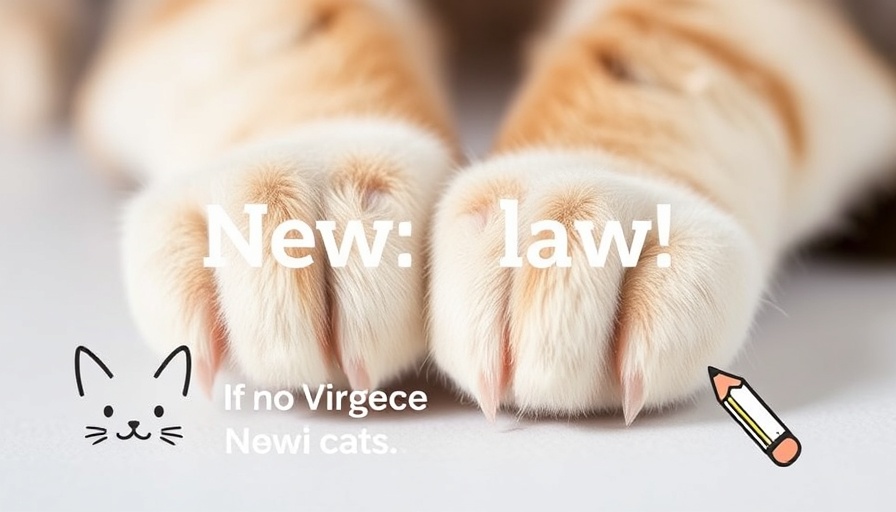
Virginia Takes a Stand: The New Cat Care Legislation
As of July 1, 2024, Virginia has joined the ranks of a select group of states in America by enforcing a groundbreaking ban on cat declawing. Under the wisdom of Del. Marty Martinez, the bill (HB 13541) passed with significant support, aiming to protect our feline friends from unnecessary pain and suffering. This legislation is pivotal not only for Virginia but signals a broader recognition of animal welfare across the nation.
The Impact of Declawing: What You Need to Know
Declawing is often mistaken for a benign procedure akin to trimming nails. The truth is far more concerning. It involves the amputation of a cat's claws, which also necessitates removing part of the toe bone. The aftermath can include chronic pain and emotional distress in cats, leading to behavioral issues such as aggression and inappropriate elimination. Understanding the true nature of declawing—misleadingly termed as a mere nail trim—allows pet owners to seek humane alternatives.
Virginia Joins a Small but Growing Movement
Virginia's ban on declawing follows similar legislation in other states, with New York paving the way as the first in 2019. Following New York, Maryland enacted its ban in October 2022, with Illinois poised to join the movement. While the U.S. is still behind many nations, including Australia, England, and Sweden—where declawing is outright illegal—Virginia's adoption of this law marks a significant step towards more humane pet ownership practices in the country.
Understanding the Therapeutic Exceptions
The new law does allow for declawing under specific conditions deemed medically necessary. These include treatments for existing infections or diseases and circumstances that put a pet owner's health at risk due to potential scratches. Such exceptions ensure that while the practice is largely outlawed, there exists a safety net for critical medical cases.
Alternatives to Declawing: Keeping Your Home Intact
For those worried about cats ruining furniture or carpets, several non-invasive alternatives can help manage their claws. Regular nail trims, the use of scratching posts, and claw covers are effective methods to protect homes while allowing cats to retain their natural behavior. Here are a few tips for pet owners:
- Provide Scratching Posts: Cats have an instinctual need to scratch. Investing in sturdy scratching posts, preferably made of different materials, can keep them engaged and satisfied.
- Nail Trimming: Regularly trimming your cat's nails can keep them at a manageable length, reducing the chances of accidental damage.
- Claw Covers: These soft, plastic caps can be placed over a cat's claws to prevent scratching, offering a non-invasive solution to the issue.
The Emotional Story Behind the Legislation
In advocating for this bill, voices from organizations like PETA and veterinary associations emphasized the emotional and physical toll declawing inflicts on cats. The emotional push to ban this practice reflects changing attitudes towards animal welfare and the importance of treating pets with respect and kindness. As animal lovers and advocates, we must continue to educate ourselves and others about their needs.
Conclusion: Adapting to a New Era of Cat Care
The ban on declawing in Virginia encapsulates a significant shift in societal attitudes towards animal rights. By understanding the implications of the new law, pet owners in Virginia are encouraged to adopt better practices for caring for their cats, ensuring their happiness and well-being without compromising their natural behaviors. As our furry companions remain at the heart of the home, let us advocate for their health and happiness by staying informed and compassionate, and supportive of laws that protect vulnerable lives.
If you want to stay updated on more animal welfare news and tips on enriching your pet’s life, subscribe to our newsletter and join the conversation on how we can support each other in being responsible pet owners!
 Add Row
Add Row  Add
Add 




Write A Comment